June 23rd, 2025
CMS-EXO-23-010
A search for nonresonant new physics phenomena in high-mass dilepton events produced in association with b-tagged jets is performed using proton-proton collision data collected in 2016-2018 by the CMS experiment at the CERN LHC, at a center-of-mass energy of 13 TeV corresponding to an integrated luminosity of 138 fb-1. The analysis considers two effective field theory models with dimension-six operators; involving four-fermion contact interactions between two leptons (ℓℓ, electrons or muons) and b or s quarks (bbℓℓ and bsℓℓ). Two lepton flavor combinations (ee and μμ) are required and events are classified as having 0, 1, and 2 b-tagged jets in the final state. No significant excess is observed over the standard model backgrounds. Upper limits are set on the production cross section of the new physics signals. These translate into lower limits on the energy scale Λ of 6.9 to 9.0 TeV in the bbℓℓ model, depending on model parameters, and on the ratio of energy scale and effective coupling, Λ/g* , of 2.0 to 2.6 TeV in the bsℓℓ model. The latter represent the most stringent limits on this model to date. Lepton flavor universality is also tested by comparing the dielectron and dimuon mass spectra for different b-tagged jet multiplicities. No significant deviation from the standard model expectation of unity is observed.
CMS-EXO-23-010

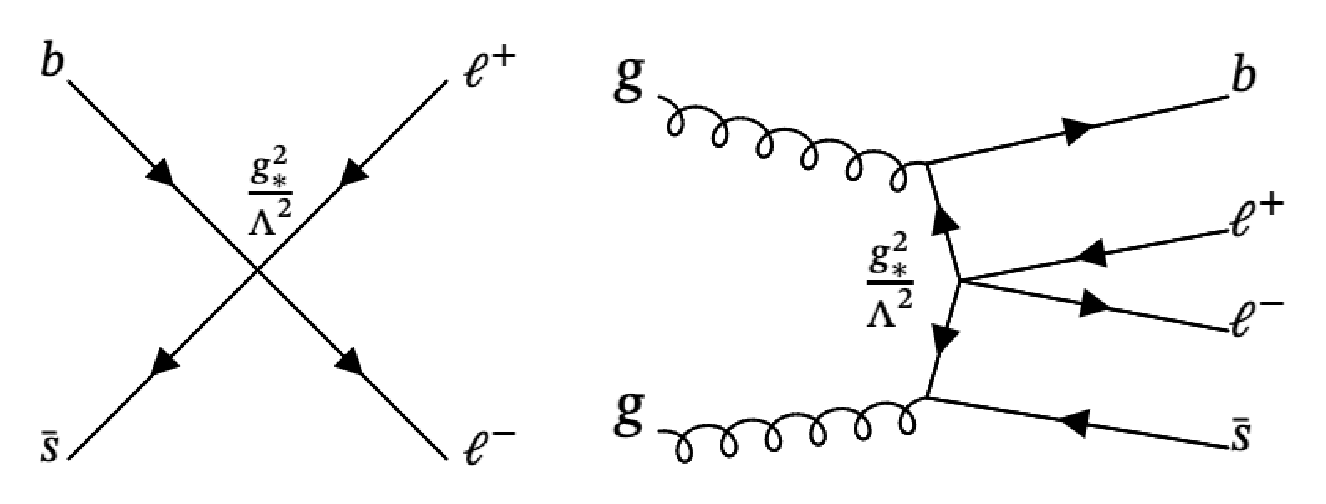
CMS-EXO-23-010
DNN primarily to reduce tt bkgd.
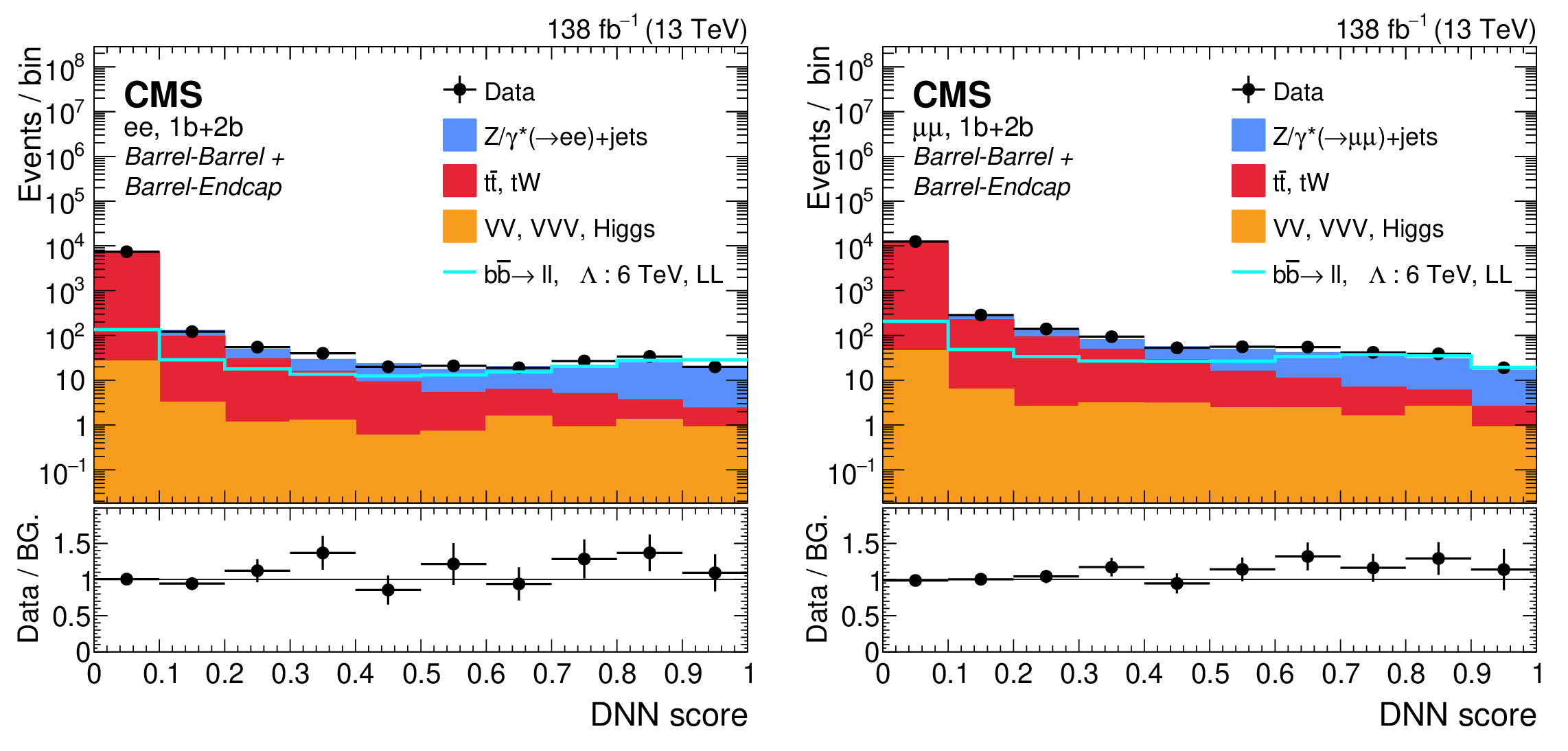

CMS-EXO-23-010
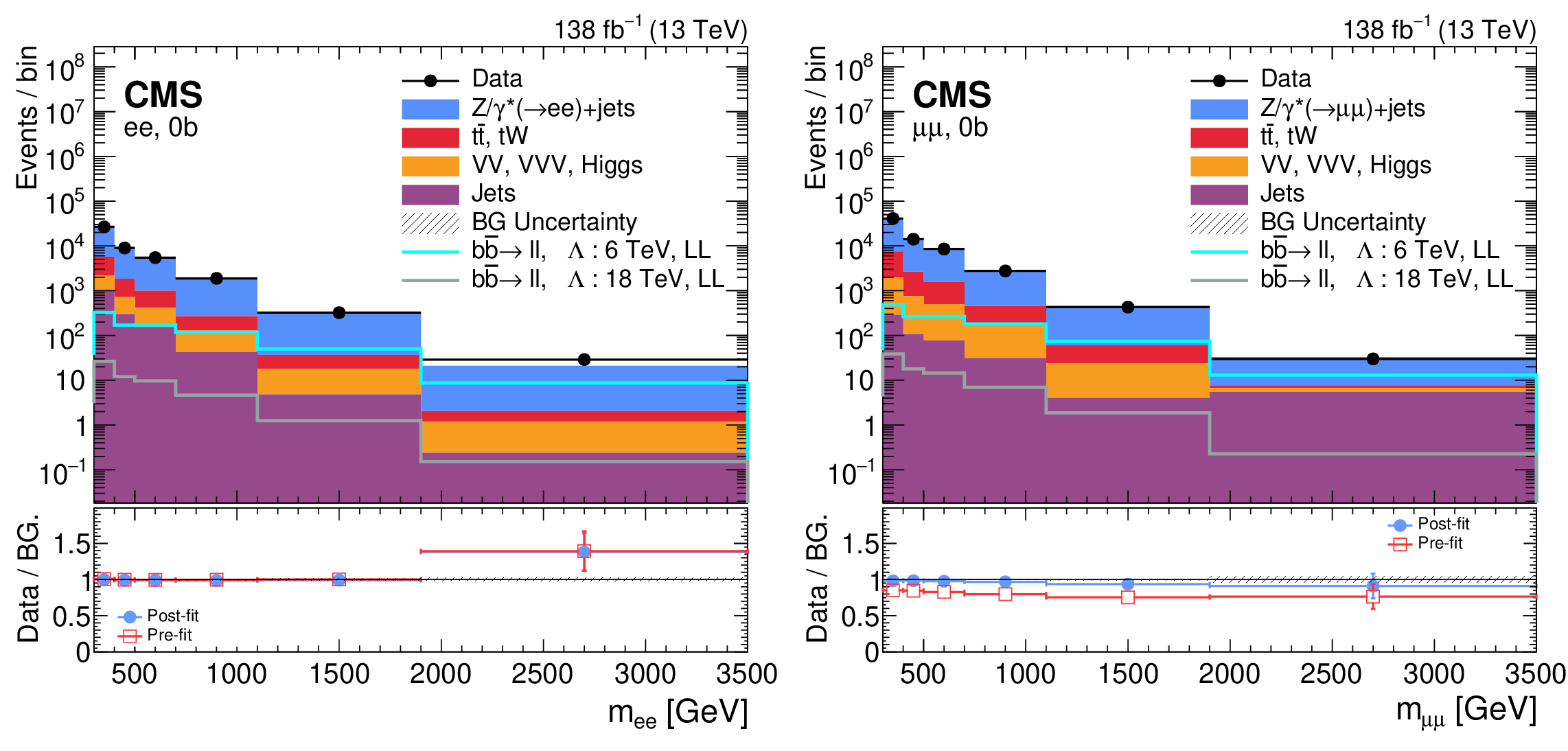
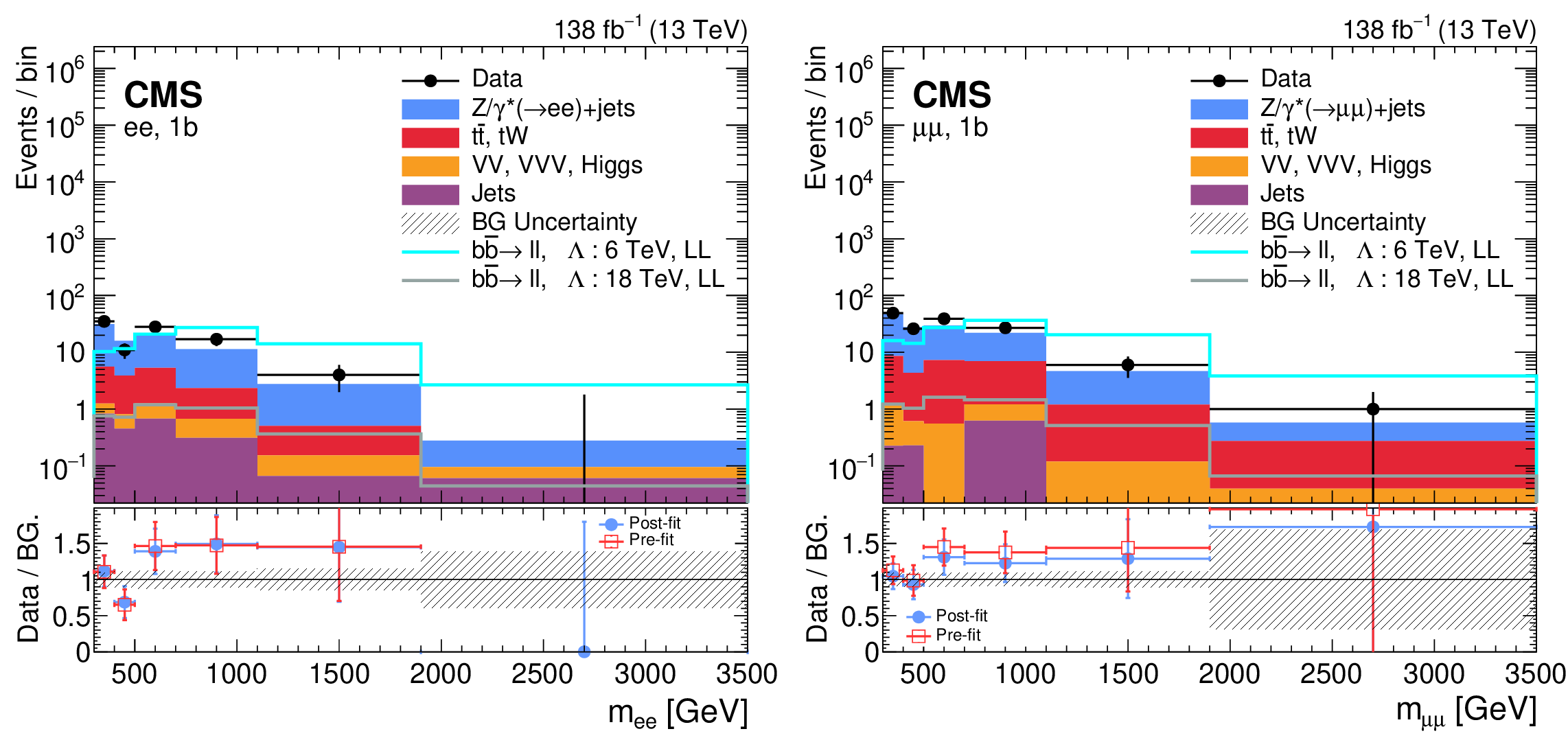
CMS-EXO-23-010
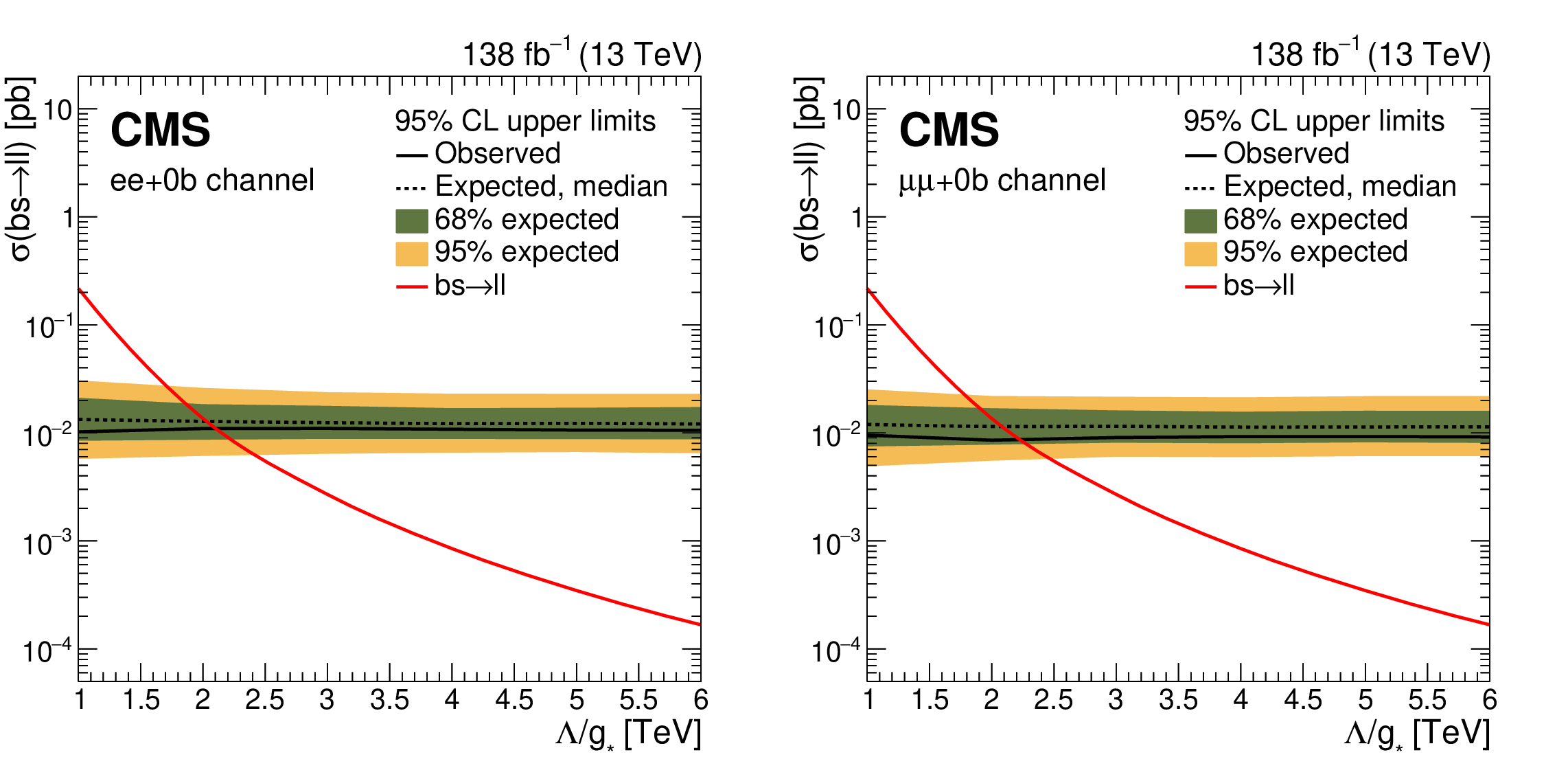
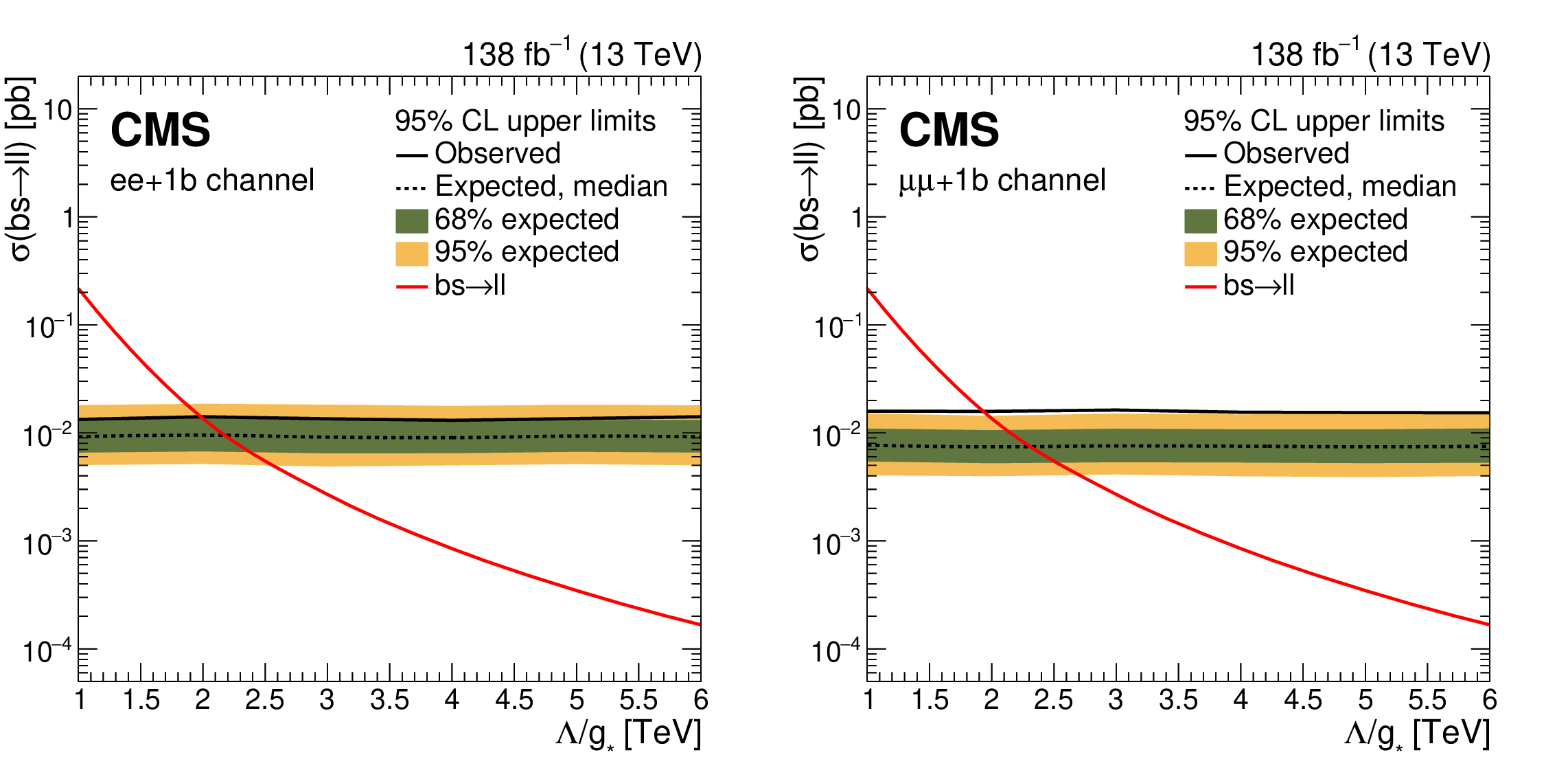
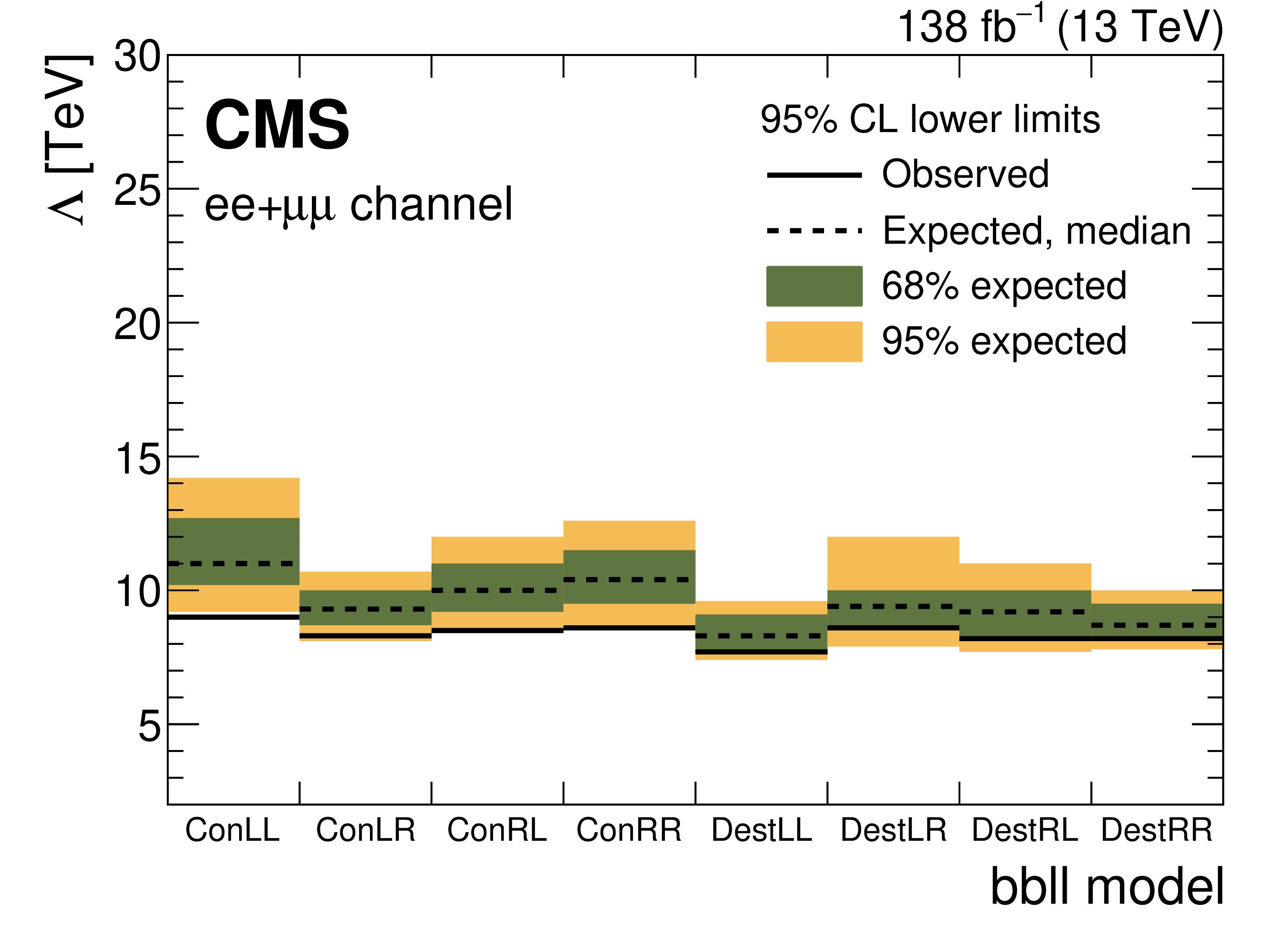
ATLAS Collab.
At the Large Hadron Collider, the WbWb final state is expected to be dominated by tt production with a contribution from single-top processes. Differential cross-sections for WbWb production in the dilepton decay channel are measured at the particle level as a function of various kinematic variables. The analysis is based on data from proton-proton collisions at a centre-of-mass energy of √s=13 TeV, recorded by the ATLAS detector at the Large Hadron Collider over the period from 2015 to 2018, corresponding to an integrated luminosity of 140 fb−1. Measurements are performed within the fiducial phase-space defined by the presence of two b-jets and one electron and one muon of opposite charges. The differential cross-sections are corrected for detector effects and unfolded to the particle level. Results are compared with predictions from Monte Carlo event generators at next-to-leading order in perturbative quantum chromodynamics. These measurements provide valuable constraints on the modelling of WbWb production and the interference between doubly resonant and singly resonant WbWb production.
ATLAS Collab.
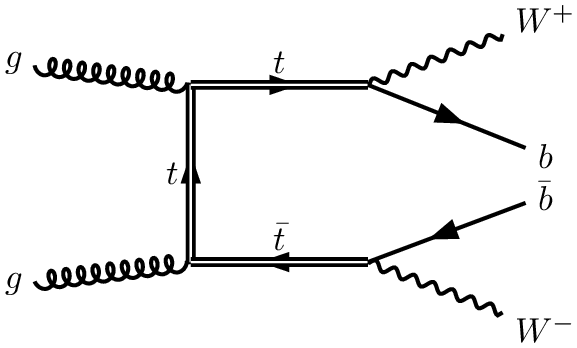
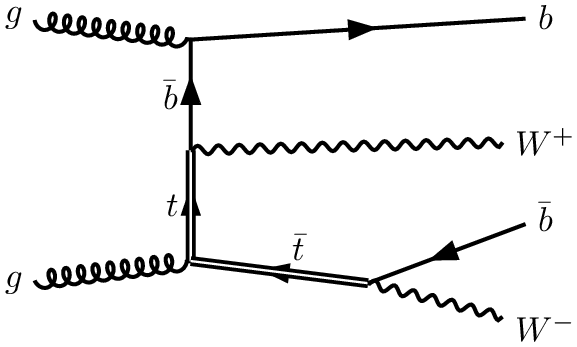
ATLAS Collab.
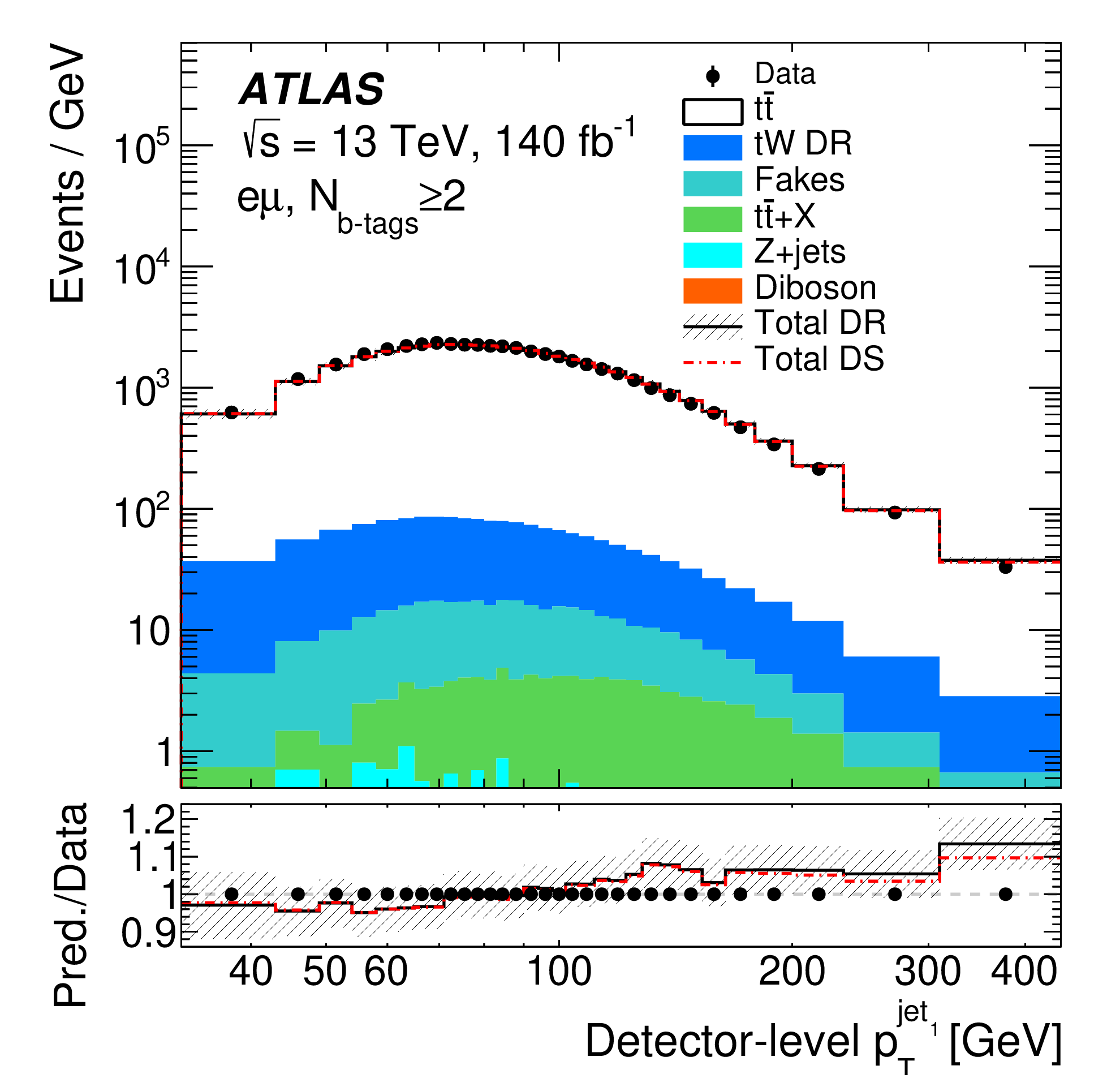
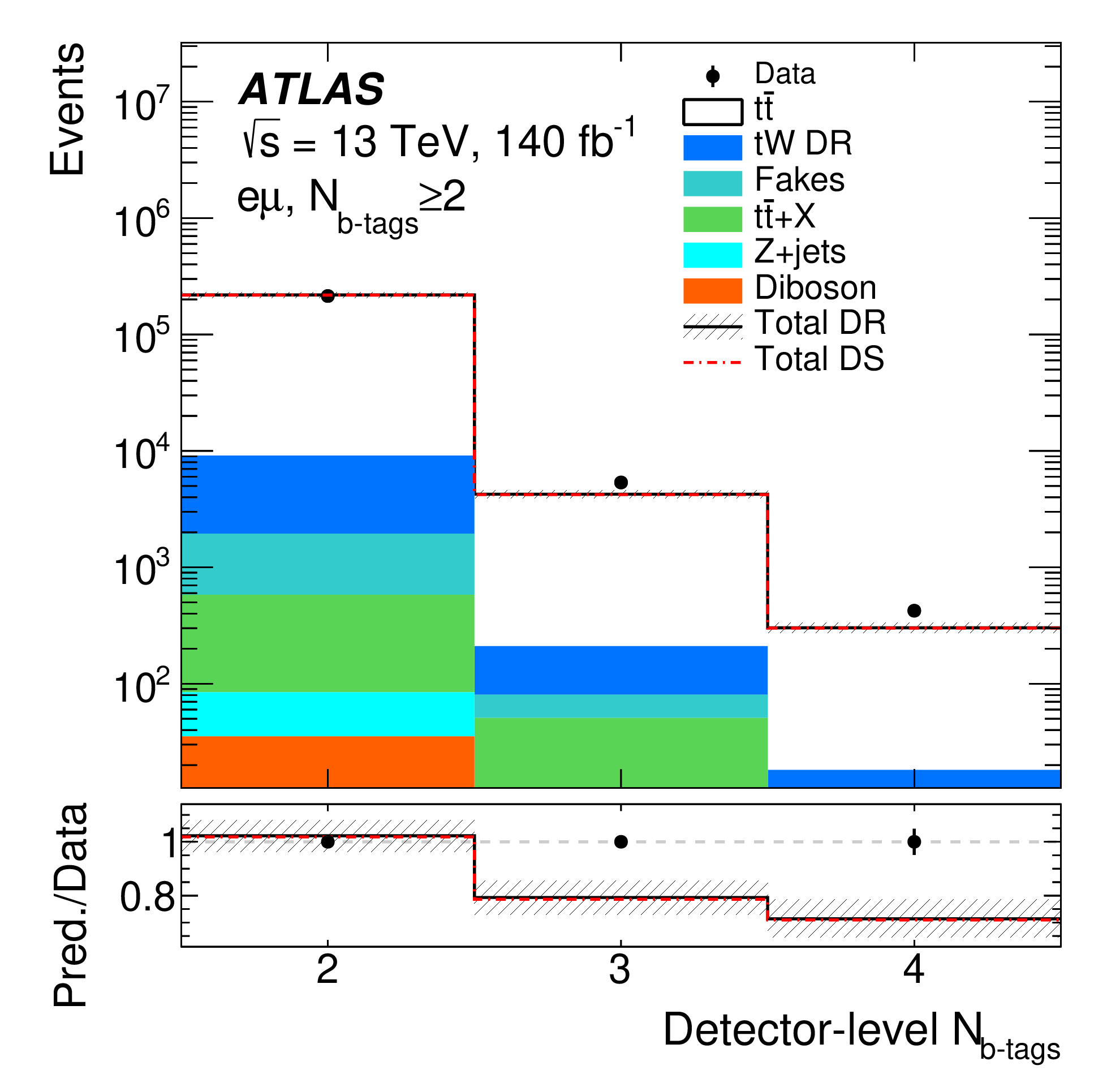
ATLAS Collab.
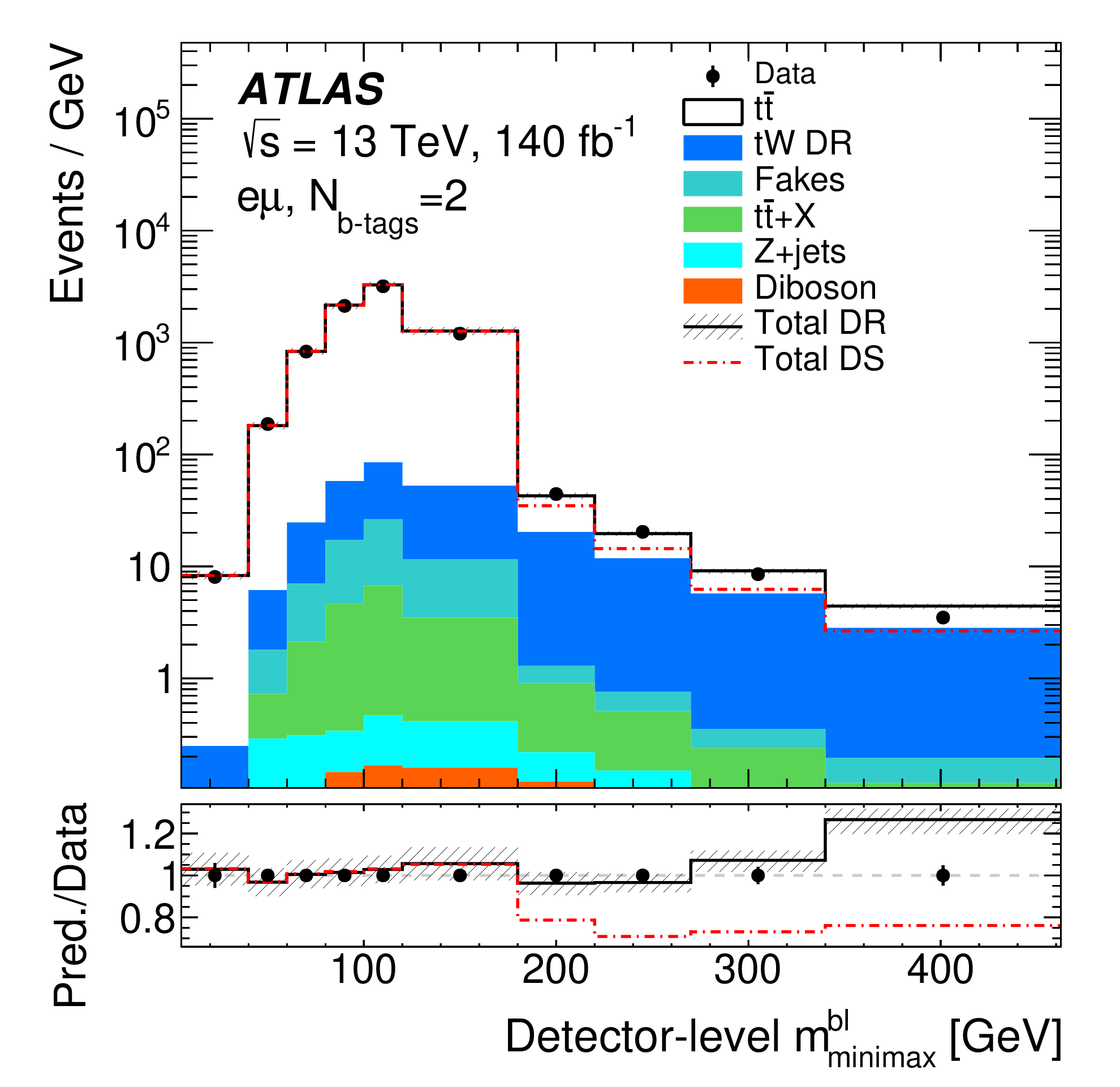
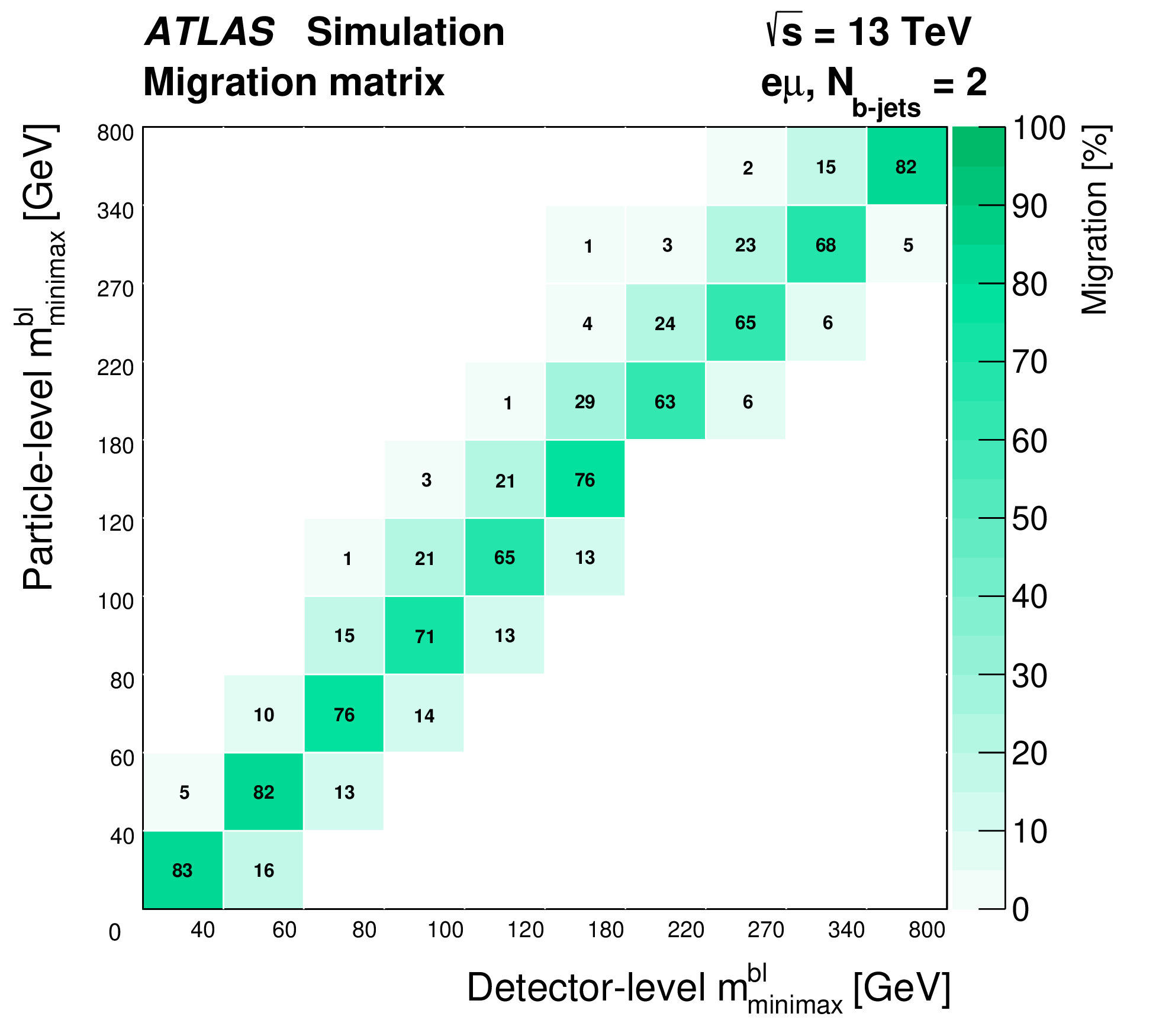
ATLAS Collab.
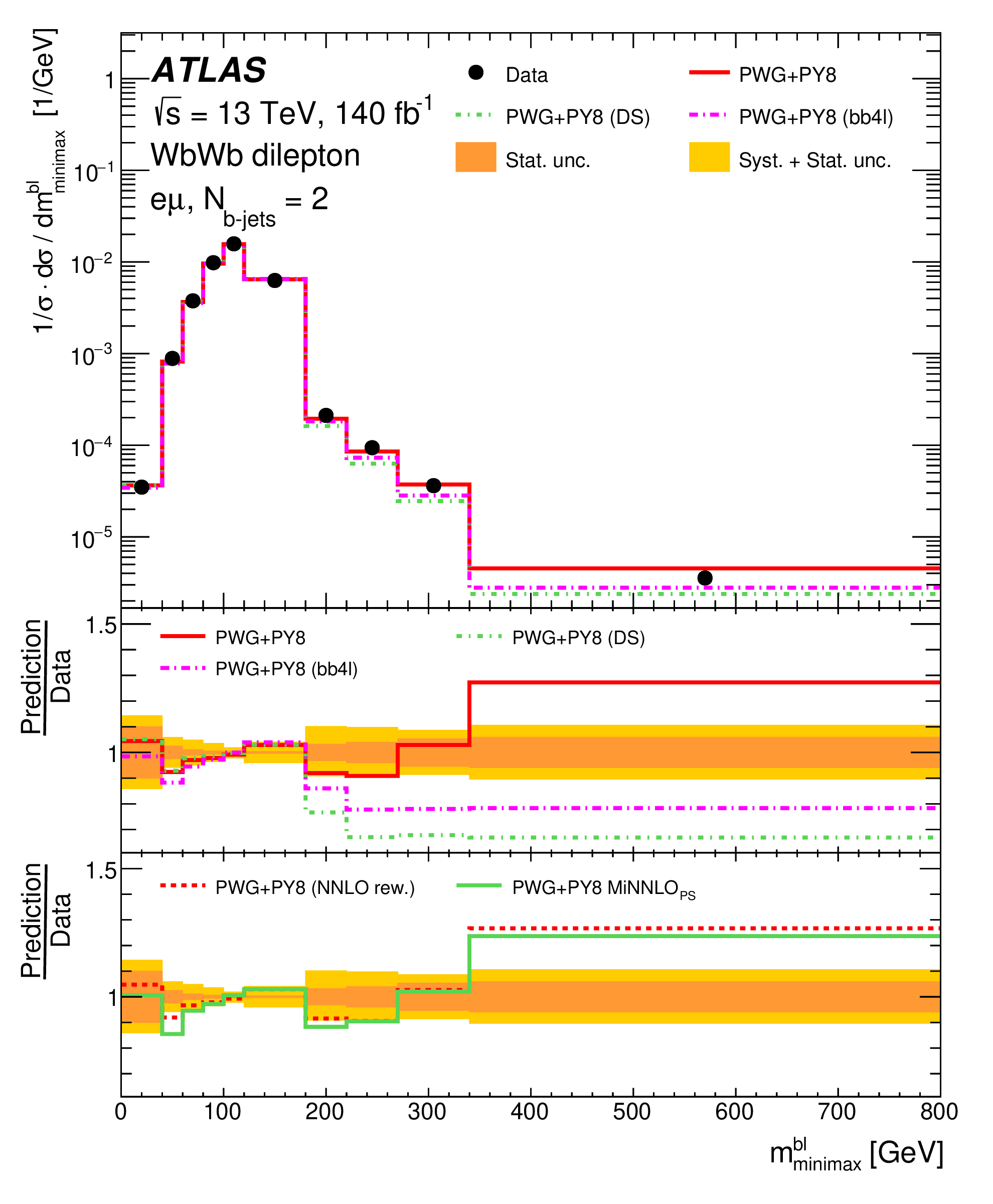
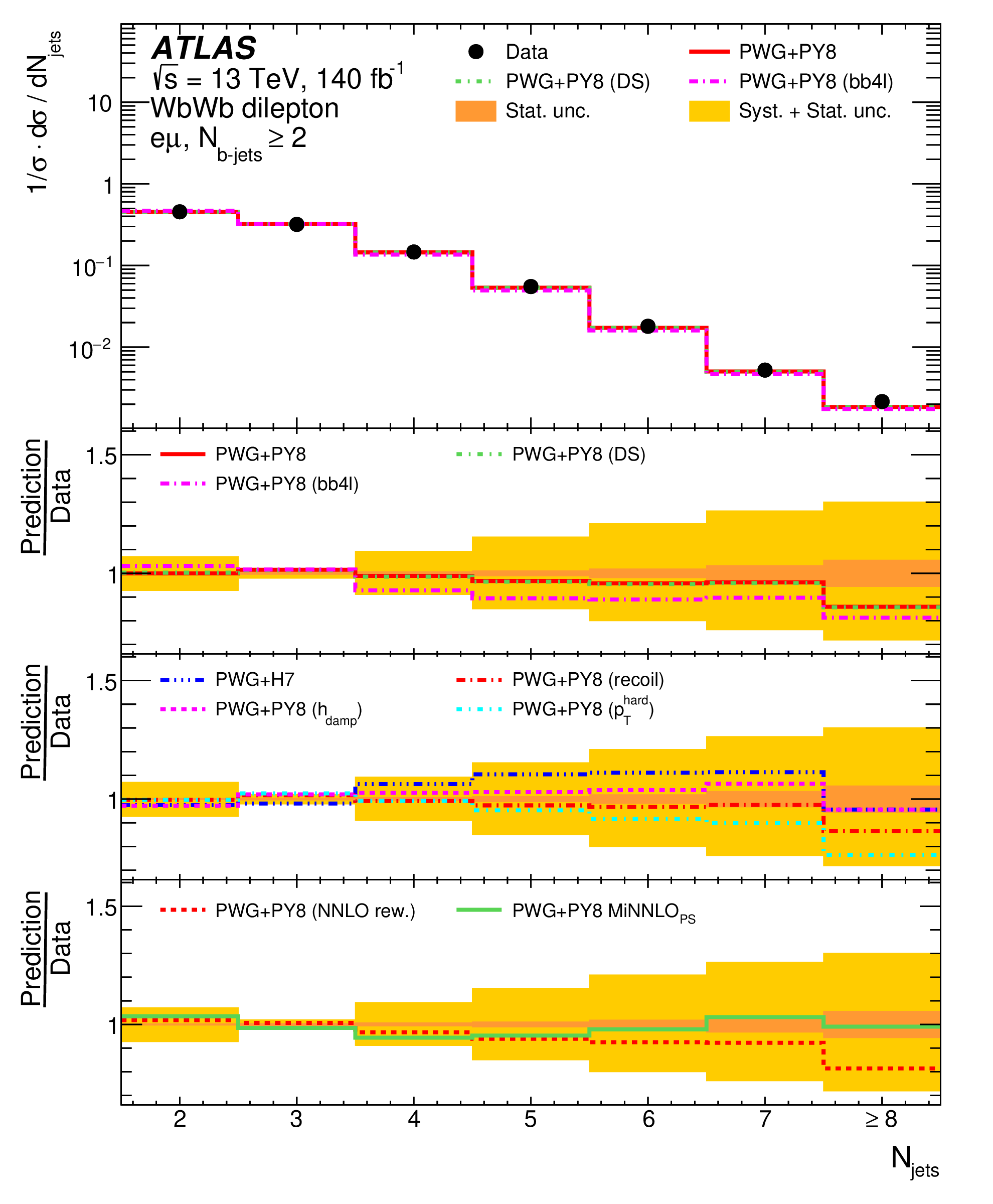
ATLAS Collab.
A search for single production of a vector-like quark Q, which could be either a singlet T, with charge 2/3, or a Y from a (T,B,Y) triplet, with charge −4/3, is performed using data from proton-proton collisions at a centre-of-mass energy of 13 TeV. The data correspond to the full integrated luminosity of 140 fb−1 recorded with the ATLAS detector during Run 2 of the Large Hadron Collider. The analysis targets Q→Wb decays where the W boson decays leptonically. The data are found to be consistent with the expected Standard Model background, so upper limits are set on the cross-section times branching ratio, and on the coupling of the Q to the Standard Model sector for these two benchmark models. Effects of interference with the Standard Model background are taken into account. For the singlet T, the 95% confidence level limit on the coupling strength κ ranges between 0.22 and 0.52 for masses from 1150 to 2300 GeV. For the (T,B,Y) triplet, the limits on κ vary from 0.14 to 0.46 for masses from 1150 to 2600 GeV.
ATLAS Collab.

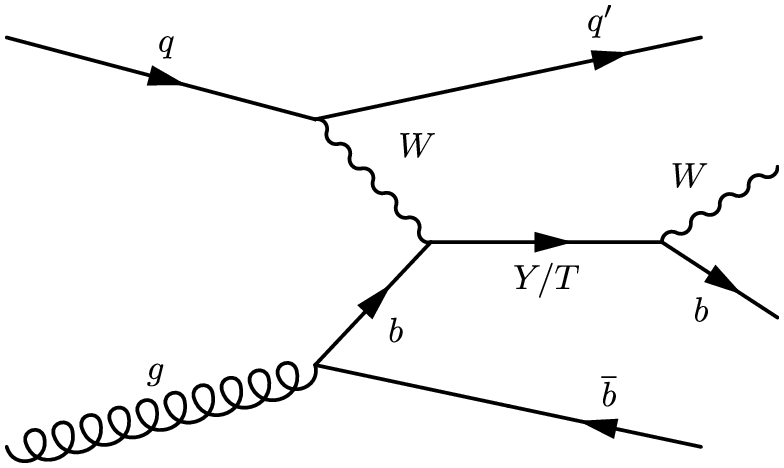
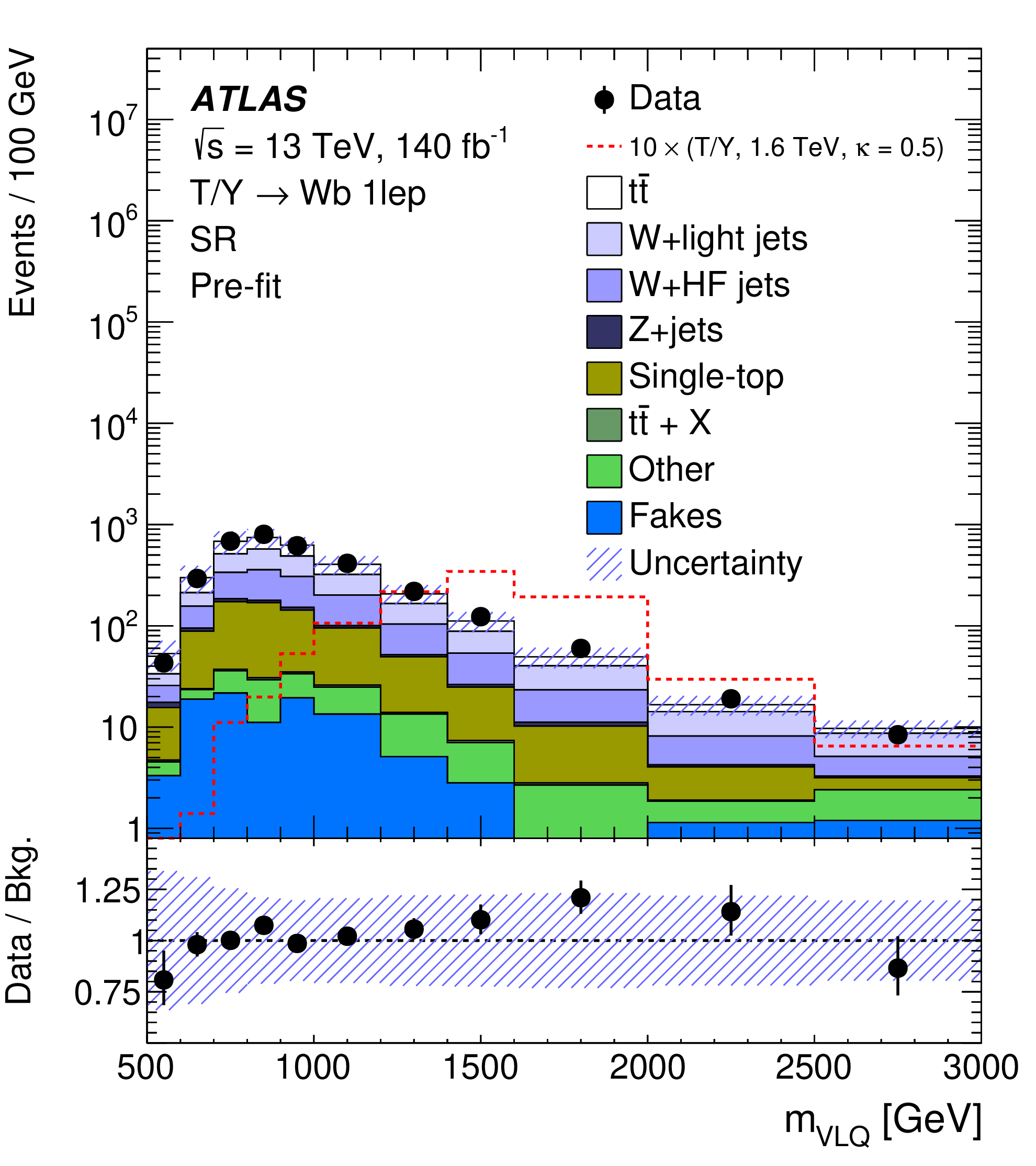
ATLAS Collab.
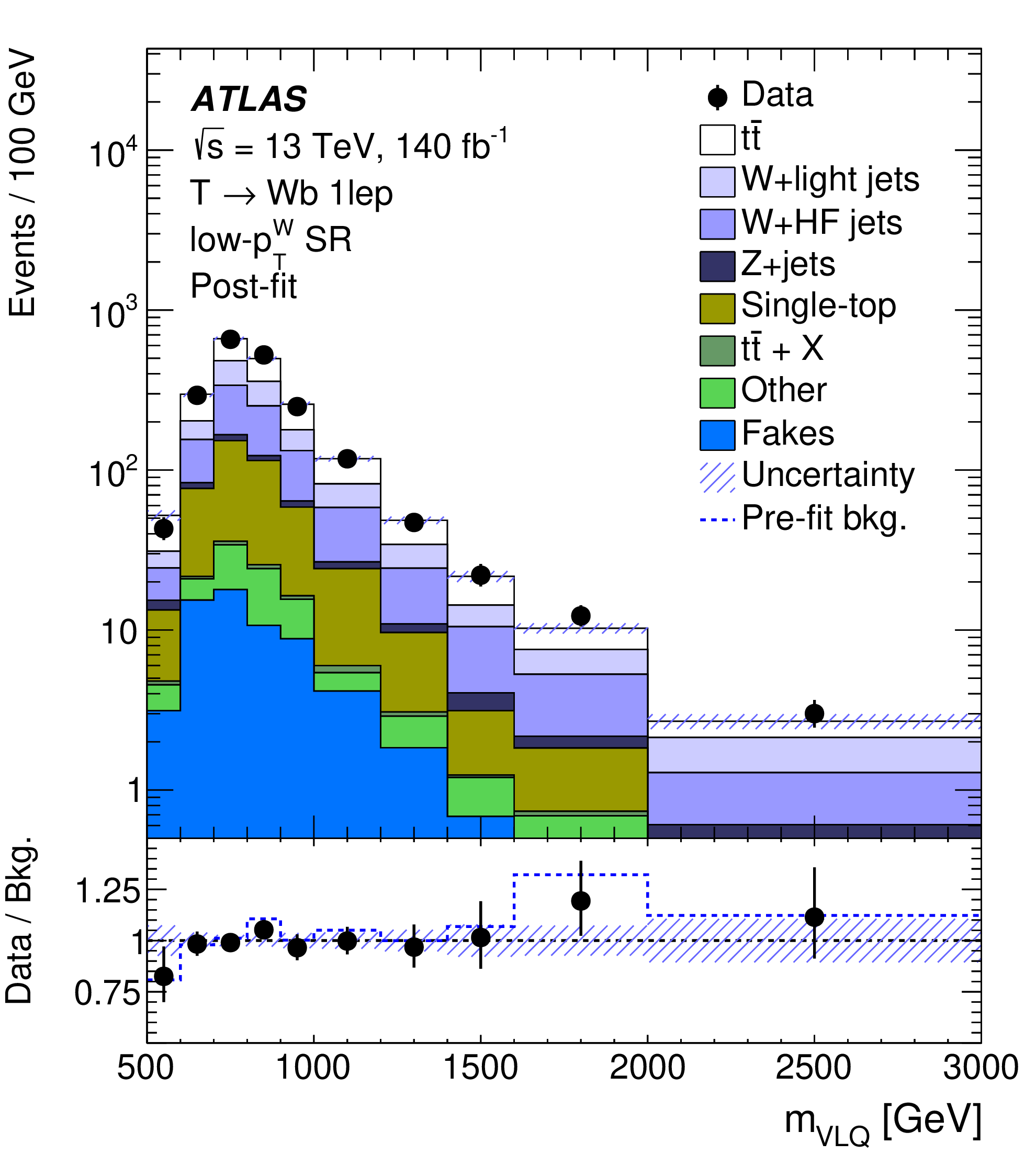
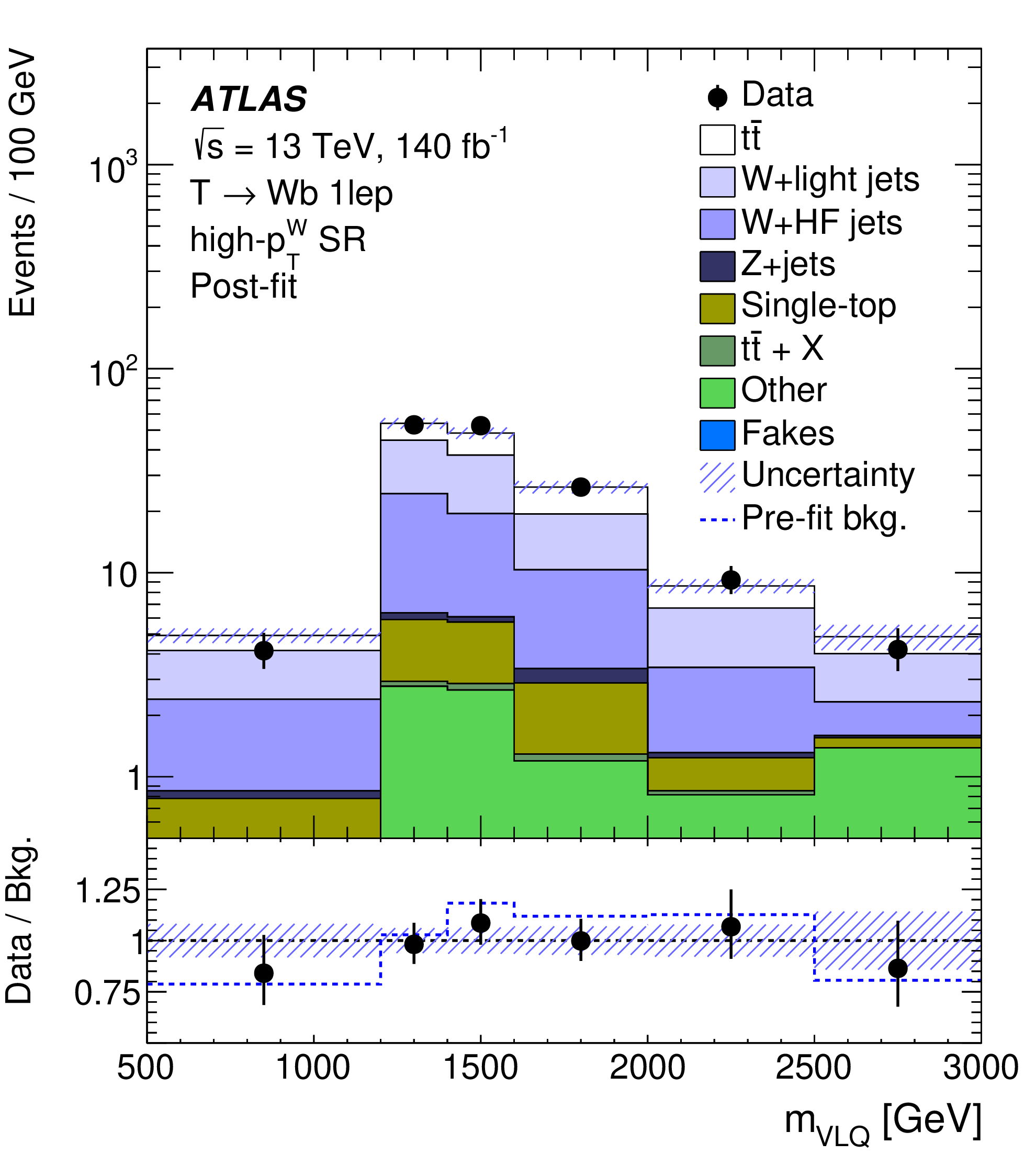
ATLAS Collab.
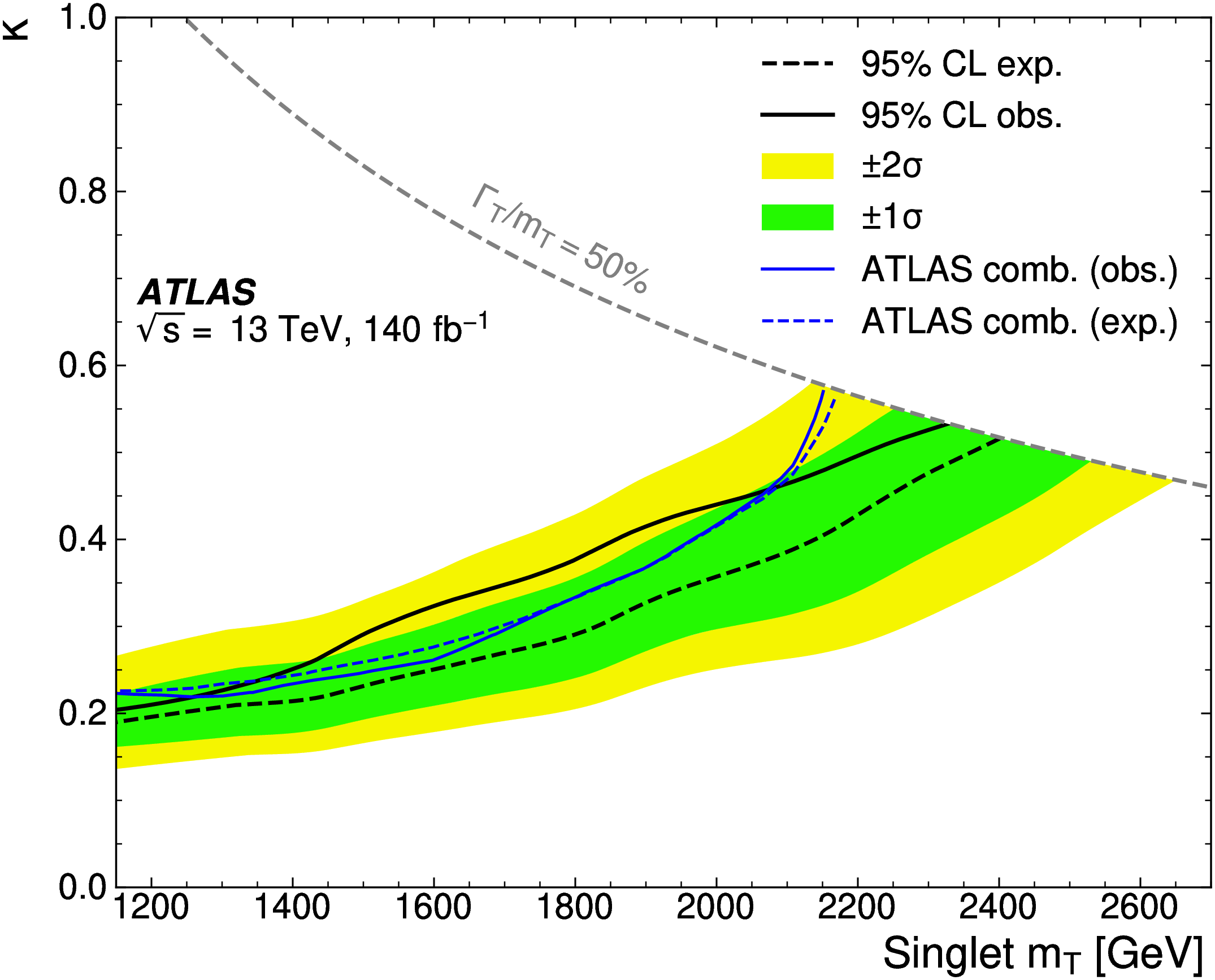
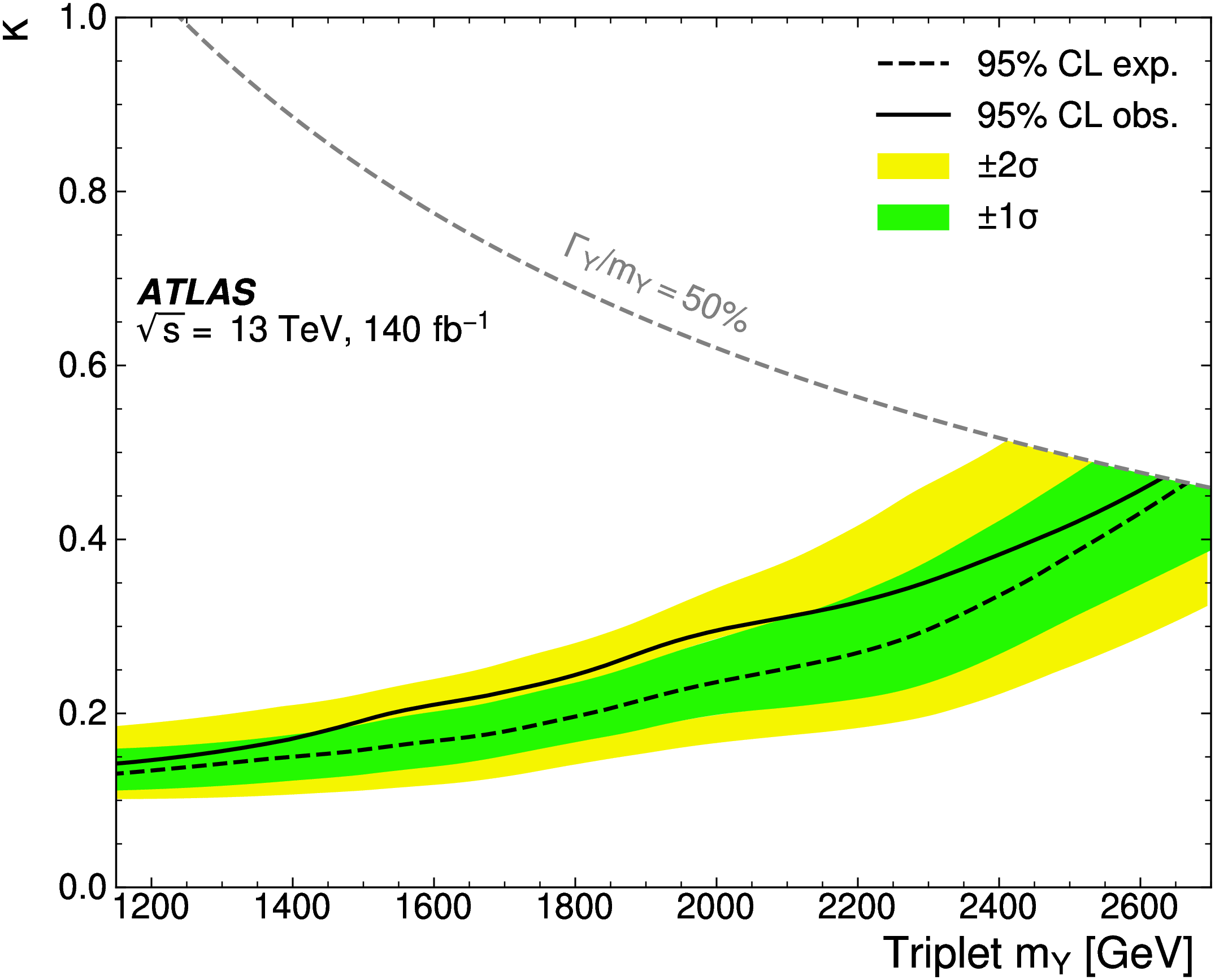
Belle II Collab.
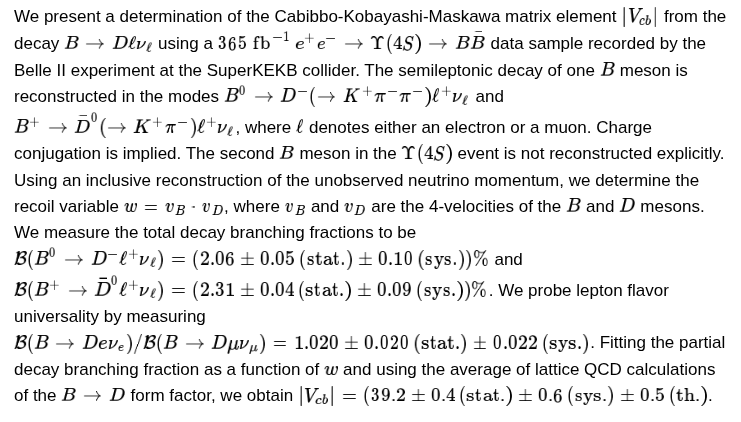
D. Akturk et al
Conceptual design and performance evaluation of HL-LHC based antimuon-proton collider (μLHC) are presented. Leveraging the TRISTAN concept based on established J-PARC ultra-cold μ+ beam technology, μLHC will give the opportunity to achieve a 5.3 TeV center-of-mass energy, significantly surpassing EIC and LHeC. Two booster ring options for acceleration, namely, a μTRISTAN-based and a repurposed LHeC ERL-based systems, are explored. Achievable luminosities are predicted to exceed 1033 cm-2s-1. The μLHC offers substantially wider kinematic plane coverage, particularly in small-x and high-Q2 regions, significantly contributing to QCD basics and Higgs boson properties. Its unique potential for BSM physics extends to muon-related phenomena like excited muons, color-octet muons, leptoquarks, and contact interactions. A possible detector concept is also outlined. Given the maturity of ultra-cold μ+ beam technology, μLHC is highly feasible for earlier realization than the muon collider, positioning it as a critical tool for the future of high energy physics.
Y. Pallam, S. Desai
In a recent study, arXiv:2401.13043 found evidence for a 6% flux contribution from Jupiter to the total flux rate time series data from the BOREXINO solar neutrino experiment, specifically during the time intervals 2019-2021 and 2011-2013. The significance of this detection was estimated to be around 2σ. We reanalyze the BOREXINO data and independently confirm the Jovian signal with the same amplitude and significance as that obtained in arXiv:2401.13043. However, using the same technique, we also find a spurious flux contribution from Venus and Saturn (at ~2σ significance), whereas prima facie one should not expect any signal from any other planet. We then implement Bayesian model comparison to ascertain whether the BOREXINO data contain an additional contribution from Jupiter, Venus or Saturn. We find Bayes factors of less than five for an additional contribution from Jupiter, and less than or close to one for Venus and Saturn. This implies that the evidence for an additional contribution from Jupiter is very marginal.
CMS-TRK-20-002
Salient aspects of the commissioning, calibration, and performance of the CMS silicon strip tracker are discussed, drawing on experience during operation with proton-proton collisions delivered by the CERN LHC. The data were obtained with a variety of luminosities. The operating temperature of the strip tracker was changed several times during this period and results are shown as a function of temperature in several cases. Details of the system performance are presented, including occupancy, signal-to-noise ratio, Lorentz angle, and single-hit spatial resolution. Saturation effects in the APV25 readout chip preamplifier observed during early Run 2 are presented, showing the effect on various observables and the subsequent remedy. Studies of radiation effects on the strip tracker are presented both for the optical readout links and the silicon sensors. The observed effects are compared to simulation, where available, and they generally agree well with expectations.
Scott Willenbrock
It has been known since the 1950's that an unstable particle is associated with a complex pole in the propagator. This had to be rediscovered twice: in the early 1970's in the context of hadronic resonances, and in the early 1990's in the context of the Z boson. The physical mass of the particle is the real part of the pole in the complex energy plane. In hadronic physics, this replaced the “Breit-Wigner mass,” which was found to depend on the parameterization of the “energy-dependent width”. In Z physics, it replaced the “on-shell” mass, which was found to be gauge dependent. Although the mass defined from the complex pole position has been widely discussed in the literature, it has not yet made its way into quantum field theory textbooks.